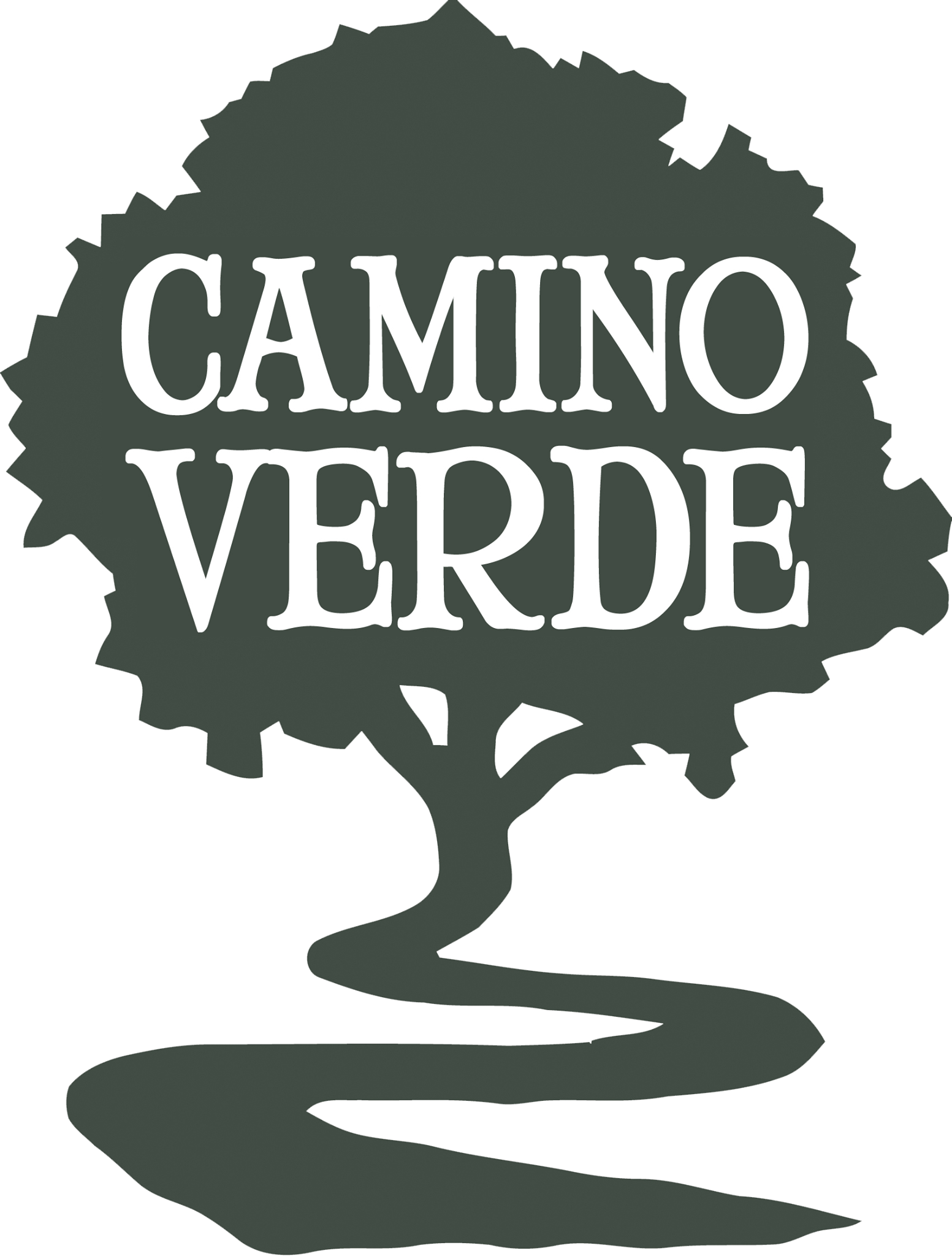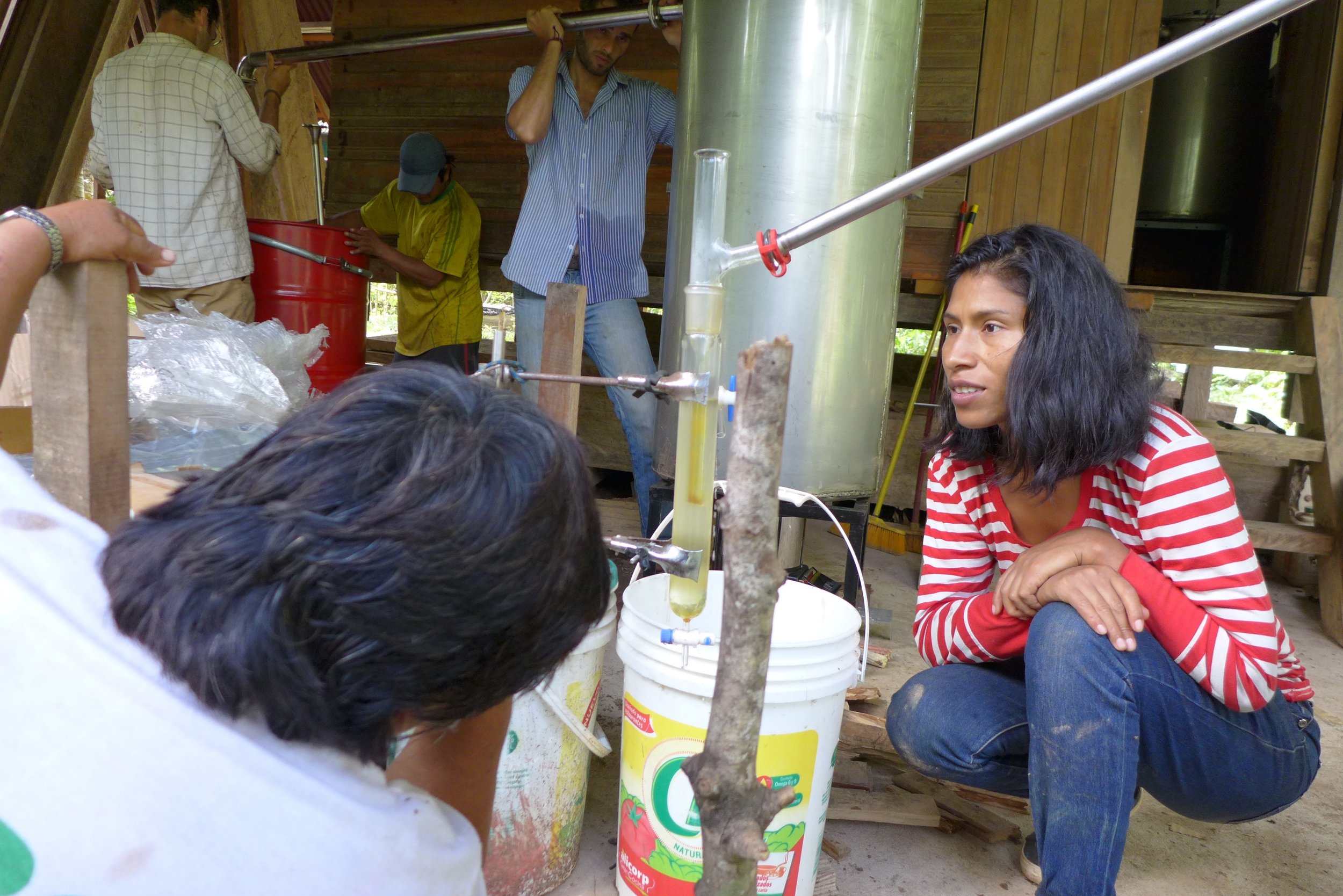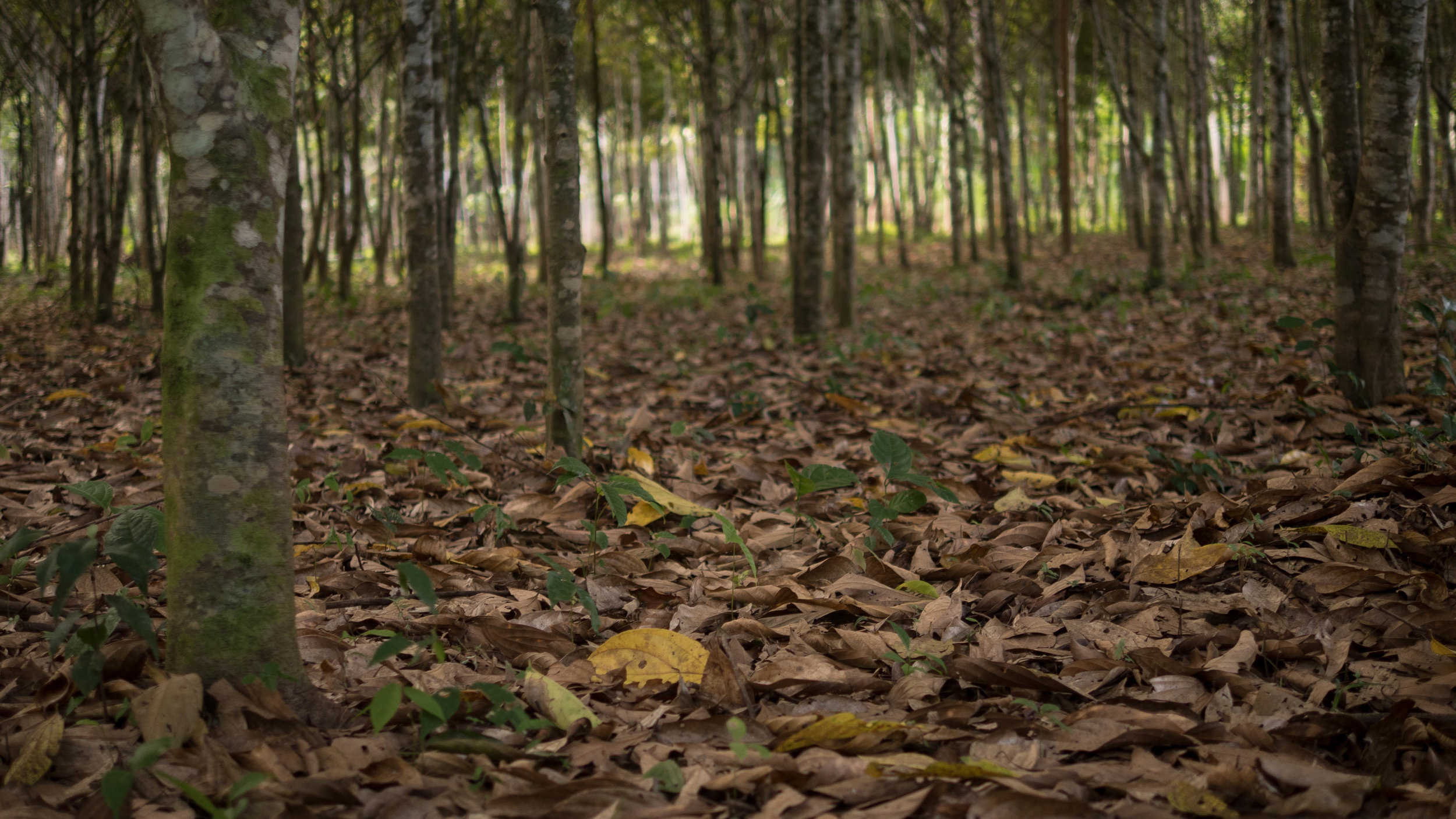Moena Alcanfor - the scent of the rainforest
The tiny flowers of Moena Alcanfor
If you're reading this you probably know that Camino Verde is a grassroots reforestation organization based in the Peruvian Amazon region of Madre de Dios. This departmento of Peru is roughly the size of South Carolina and is considered by some to be the largest remaining region of intact tropical forest left in the world. The Tambopata rainforest is one of the Earth's most bio-diverse places.
The region's historical isolation is now being undermined by the Interoceanic Highway which crosses Peru and Brazil, spanning South America coast to coast. Unprecedented rates of deforestation and population growth have snowballed in the past ten years. Camino Verde grew out of the need for more ecologically sound, longterm-minded solutions that could also provide economically. If people can make money off of planting trees, they will. And we need all the trees we can get.
After ten years of planting trees in the Peruvian Amazon, the result is the toolkit known as Camino Verde's Living Seed Bank, home to over 300 species of Amazonian trees as a source of seed for future planting campaigns. The over 20,000 trees that make up the reforestation center are planted in agro-forestry systems (tree-based agriculture) that demonstrate tangibly how planting trees can be economically viable for small farmers.
A key to the success of agro-forestry systems is the production of and connection to markets for non-timber forest products (NTFPs), a fancy term for things you can get from trees without killing them. Fruits, medicines, crafts materials and culturally significant species all provide possible economic motors to incentivize tree planting. Our highly bio-diverse polycultures imitate the structure and variety of natural forests and also provide resiliency – if one crop fails, other crops compliment a farmer's income. Cacao grows alongside açaí, alongside cat's claw, alongside rosewood and mahogany and brazil nut.
Distilling essential oil
One of the most exciting NTFPs-as-economic motor we've found is essential oils. A surprising number of Amazonian hardwoods have striking aromas. The correspondence makes sense – aromatic compounds can make wood durable by deterring termite attack or rot. Many Amazonian tree resins are known for their powerful medicinal properties as well. This is what inspired us to grow Moena Alcanfor, the first essential oil we're producing.
But before I jump in about moena, let me backtrack in time by a few years.
Just after Camino Verde was founded, I first learned of Brazilian rosewood (Aniba rosaeodora) from a friend of mine who distills essential oil in Peru. He mentioned rosewood's use in Chanel No. 5, its rapid deforestation for cash, how huge trees were dug up from the ground because the roots also contained high concentrations of the essential oil. He said it was next to impossible to find seeds.
I researched and asked around in Tambopata and discovered that many trees from the same family as rosewood (Lauraceae) are also known locally for their aromas. The local name moena is given to a whole subfamily noted in traditional plant knowledge for their aromas and fine timber. I started searching forests for seeds and had soon identified several aromatic species.
El Moenal - the Moena Alcanfor reforestation area
In 2010 Camino Verde planted 550 trees of Moena Alcanforada, which could be translated as "camphorated moena." Other moenas include cinnamon moena, yellow moena, avocado moena, anise moena. The name Moena Alcanforada refers to the camphor-like scent and therapeutic properties of this tree, identified botanically as Endlicheria krukovii.
Why this tree? In addition to its familial link to rosewood, Moena Alcanfor was a furniture wood I had seen and admired and a species whose aroma I found really evocative and wonderful when I crushed its leaves, or broke a twig, or squeezed one of its oily fruits like tiny avocados. I hoped that Moena Alcanfor, like rosewood, would contain essential oil rather than some other kind of aromatic compound.
Also, I knew that in traditional medicine this tree is seen as having cooling properties and is used to reduce inflammation, especially associated with fever and heat. One local moto-taxi driver swears by it for his prostate. Another farmer says that it helped his arthritic knee.
In 2013 those 550 trees were big enough to handle some light pruning of side branches to start distilling, and we did indeed find that this species contains essential oil. We use only lateral branches and leaves, pruned in benefit of tree growth and health. As far as we know, our small grove is the largest reforestation of this tree in the world and we are the only people in the world distilling this species.
Moena Alcanfor seedlings ready to be planted out with our partner farmers in 2017
This year we planted 1000 more of these trees on three of our partner farmers' land with the goal of providing them access to our distillation equipment (one has already been trained with us to distill) and a new, regenerative source of livelihood within 3 years. For this to work, we also need to develop markets for the oil, and we've been fortunate enough to partner with several forward thinking companies to gradually grow the market for a new scent.
Work with Moena Alcanfor is part of a broader strategy involving NTFPs from aromatic species. We've planted another 6 moenas and several other non-Lauraceae aromatic species, some of which will come online for first distillations in 2018. This will allow us to expand our work with more farmers and plant more aromatic trees, thus ensuring the survival of these species that have been decimated for timber. All of the species we've planted are one of a kind, planted and distilled nowhere else. Except for one which is also planted and sold elsewhere – Brazilian rosewood, which we've planted but haven't been able to start selling yet due to the (important) restrictions placed on cross-borders trade of species that are so severely endangered.
Moena Alcanfor is our flagship essence from the Peruvian Amazon, already enjoyed by perfumists, aromatherapists, and lovers of the rainforest around the world. Please contact us to place an order of or connect us with potential partners.
Wildlife abounds in our Moena forestry plantation in Tambopata, Peru





